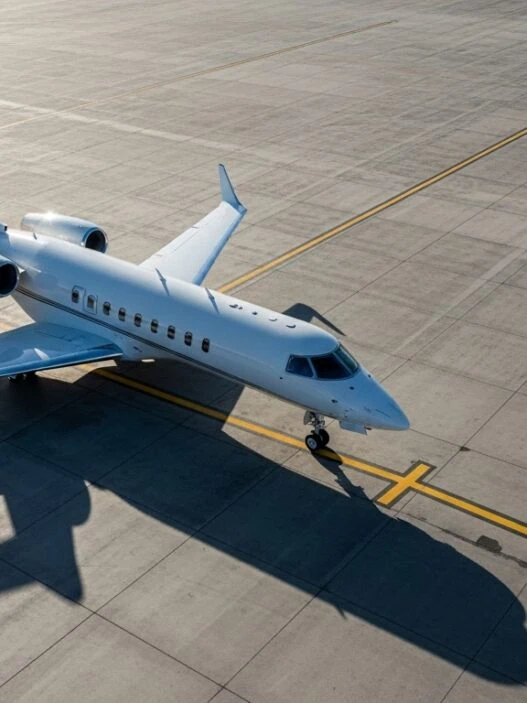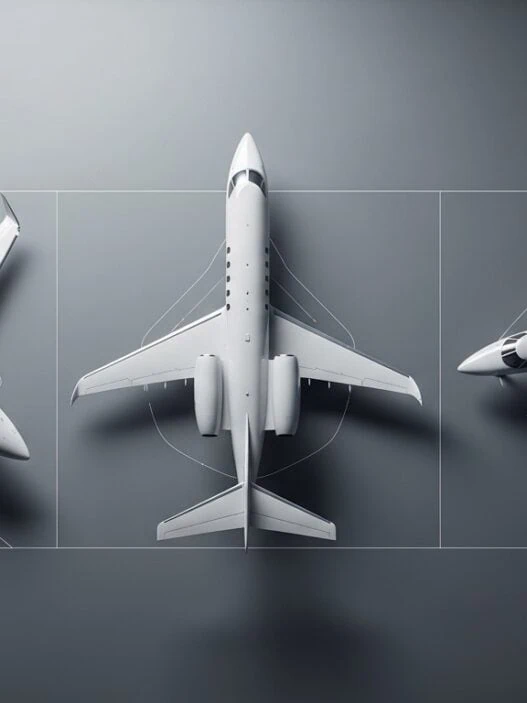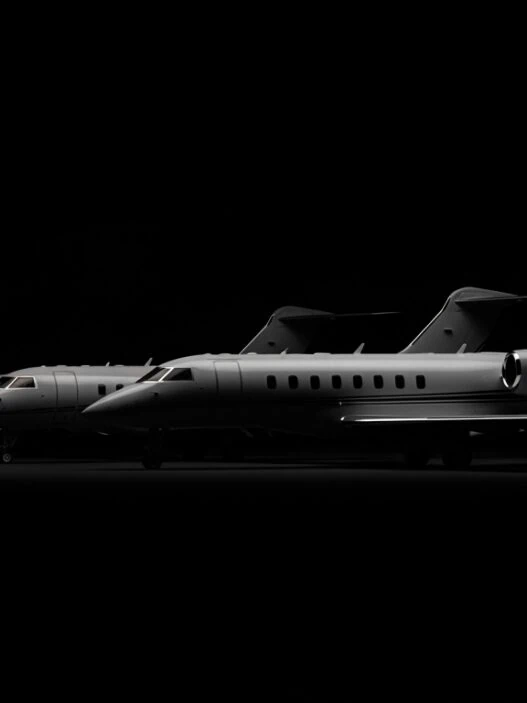Aviation excellence reaches its pinnacle when private jets navigate the world’s most challenging airports, where breathtaking airport landings demand precision that commercial aviation cannot achieve. These destinations transcend mere transportation, representing technical mastery where piloting skill intersects with geographic extremes to create experiences unavailable through conventional travel.
Key Takeaways:
- Private jets excel at short, challenging runways and remote locations inaccessible to commercial aircraft.
- Innsbruck, Queenstown, Paro, and St. Barts are among the most visually stunning and technically demanding private jet destinations.
- Pilots emphasize altitude adjustments, weather monitoring, and terrain awareness for safe landings.
- These airports are gateways to exclusive alpine, island, and mountain experiences.
The appeal of breathtaking airport landings extends beyond visual spectacle to operational capability. Private aviation enables access to destinations that remain inaccessible to larger aircraft, opening exclusive experiences in alpine valleys, remote islands, and mountainous regions where runway limitations and terrain challenges eliminate commercial alternatives.
Technical Excellence in Extreme Aviation Environments
Breathtaking airport landings require aircraft capabilities that exceed standard performance parameters. Modern private jets integrate advanced avionics, enhanced vision systems, and precision flight management computers that enable operations in challenging conditions where visual reference points may be limited and margin for error approaches zero.

The integration of synthetic vision technology enables pilots to execute breathtaking airport landings with enhanced situational awareness, overlaying digital terrain information onto primary flight displays during approaches where traditional visual cues may be obscured by weather or terrain features. This technological advancement expands operational capabilities while maintaining safety standards essential for private aviation.
According to International Civil Aviation Organization operational standards, airports with challenging approach characteristics require specialized pilot training and aircraft certification that exceed standard commercial aviation requirements. These additional qualifications ensure breathtaking airport landings maintain safety levels appropriate for private aviation operations.
Flight planning for breathtaking airport landings incorporates sophisticated weather modeling, terrain analysis, and performance calculations that account for density altitude, wind patterns, and approach geometry specific to each challenging destination. This comprehensive planning enables successful operations while maintaining operational efficiency that private aviation clients expect.
Innsbruck: Alpine Engineering Excellence
Innsbruck Kranebitten Airport exemplifies breathtaking airport landings through its dramatic Alpine setting and technical approach requirements. The airport’s 1,734-meter elevation and 1,980-meter runway length (Runway 08/26) create operational constraints that demand precise aircraft performance and exceptional pilot skill for successful completion.
The surrounding Ötztal Mountains create terrain challenges that require breathtaking airport landings to follow specific approach corridors with minimal deviation tolerance. According to Austro Control air traffic management, aircraft must maintain exact vertical navigation profiles while accommodating Alpine weather patterns that can change rapidly and significantly impact approach conditions.
Modern ultra-long-range private jets demonstrate superior capability for breathtaking airport landings at destinations like Innsbruck, where performance margins and advanced systems provide operational flexibility that enables successful completion under challenging conditions while maintaining passenger comfort throughout the approach phase.
Weight and balance calculations become critical for breathtaking airport landings at high-altitude airports, where reduced air density affects aircraft performance and requires precise fuel planning to ensure adequate performance margins while maintaining operational flexibility for weather-related approach modifications.
Queenstown: Southern Hemisphere Precision
Queenstown Airport presents unique challenges for breathtaking airport landings through its combination of terrain features, weather patterns, and approach geometry. The airport features a 2,150-meter runway (Runway 05/23) at 358 meters elevation, creating one of the world’s most technically demanding private aviation destinations requiring exceptional pilot skill and aircraft capability.

The airport’s location adjacent to Lake Wakatipu creates microclimate conditions that influence breathtaking airport landings through wind shear, turbulence, and visibility changes that require continuous pilot monitoring and adjustment throughout the approach phase to maintain safe operational parameters.
Approach procedures for breathtaking airport landings at Queenstown incorporate steep descent profiles and precise speed management that enable aircraft to navigate terrain obstacles while maintaining controllable flight characteristics. Airways New Zealand provides specialized air traffic control services that coordinate these challenging approaches throughout the approach phase, demonstrating private aviation’s operational superiority over commercial alternatives.
The economic implications of accessing remote destinations through breathtaking airport landings justify the premium costs associated with private aviation, particularly when considering private jet cost charter vs ownership for clients who regularly visit challenging destinations that commercial aviation cannot serve effectively.
Paro: Himalayan Aviation Mastery
Paro Airport in Bhutan represents the ultimate challenge in breathtaking airport landings, where pilots must navigate Himalayan terrain at 2,235 meters elevation on a 2,265-meter runway (Runway 15/33) while relying primarily on visual reference points due to limited instrument approach capabilities and challenging terrain features.
According to Bhutan Civil Aviation Authority regulations, breathtaking airport landings at Paro require specialized pilot certification and aircraft performance documentation that demonstrates capability for operations in high-altitude, mountainous terrain with limited approach aids and challenging weather patterns.
The airport’s approach procedures demand breathtaking airport landings that incorporate continuous visual contact with terrain features while maintaining precise flight path geometry through narrow valleys surrounded by peaks exceeding 5,000 meters elevation, creating operational requirements that exceed standard private aviation capabilities.
Weather monitoring becomes critical for breathtaking airport landings at Paro, where mountain weather patterns can change rapidly and create conditions that affect visibility, wind patterns, and approach feasibility within minutes of planned arrival times, requiring flexible planning and alternative routing capabilities.
St. Barts: Caribbean Precision Landing
Gustaf III Airport exemplifies breathtaking airport landings in tropical environments where the 640-meter runway (Runway 10/28) at 57 meters elevation, combined with terrain features and weather patterns, creates unique operational challenges that demonstrate private aviation’s capability to access exclusive destinations unavailable to commercial carriers.

The 850-meter runway length requires breathtaking airport landings with precise speed control and touchdown point accuracy that eliminate operational margin typical of longer runways, demonstrating pilot proficiency and aircraft performance capabilities essential for successful completion.
Crosswind limitations significantly impact breathtaking airport landings at St. Barts, where trade wind patterns create challenging approach conditions that require continuous pilot correction and advanced aircraft systems to maintain safe approach parameters throughout the landing phase.
Access to exclusive Caribbean destinations through breathtaking airport landings enables unique travel experiences highlighted in specialized guides for hidden travel destinations that showcase private aviation’s capability to reach locations beyond conventional tourism infrastructure.
Courchevel: Alpine Resort Access
Courchevel Altiport demonstrates breathtaking airport landings in winter mountain conditions where high altitude (2,008 meters elevation), short runway length (525 meters on Runway 04/22), and seasonal weather create operational challenges that require specialized aircraft capability and exceptional pilot training for successful completion.
The airport’s 525-meter runway with significant gradient creates unique requirements for breathtaking airport landings that demand precise approach speed management and enhanced aircraft performance to ensure safe operations within available runway length while accommodating alpine weather conditions.
High-altitude operations significantly affect aircraft performance during breathtaking airport landings at Courchevel, where density altitude calculations become critical for determining operational feasibility. The French Civil Aviation Authority oversees operations at this alpine facility, ensuring fuel planning requirements that ensure adequate performance margins throughout the approach and landing phase.
Technological Integration for Enhanced Safety
Modern private aviation incorporates advanced systems that enhance safety margins for breathtaking airport landings through synthetic vision, enhanced flight vision systems, and precision navigation capabilities that provide pilots with enhanced situational awareness during challenging approaches.
According to Federal Aviation Administration safety guidelines, breathtaking airport landings benefit from integrated flight deck technologies that combine multiple information sources to provide comprehensive approach guidance during operations at challenging airports with limited infrastructure or difficult terrain features.
Real-time weather monitoring systems enable dynamic adjustment of approach procedures for breathtaking airport landings, allowing pilots to modify approach geometry, speed profiles, and timing based on current conditions. World Meteorological Organization standards guide aviation weather services that maintain operational safety margins throughout the approach phase.
Risk Management and Operational Planning
Comprehensive risk assessment protocols for breathtaking airport landings incorporate detailed analysis of weather patterns, terrain features, aircraft performance limitations, and pilot qualifications to ensure operational feasibility while maintaining safety standards appropriate for private aviation operations.
Contingency planning for breathtaking airport landings includes identification of alternate airports, fuel requirements for extended routing, and weather minimums that provide operational flexibility when primary destinations become unavailable due to conditions beyond operational limits.
According to European Aviation Safety Agency operational requirements, operators conducting breathtaking airport landings must demonstrate compliance with enhanced training standards, aircraft performance documentation, and operational procedures that exceed requirements for standard airport operations.
Economic Considerations and Market Impact
The premium pricing associated with breathtaking airport landings reflects operational complexity, specialized equipment requirements, and enhanced pilot training that enable access to destinations unavailable through commercial aviation while maintaining service quality expectations of private aviation clientele.
Insurance considerations for breathtaking airport landings incorporate enhanced coverage requirements and specialized underwriting that account for operational risks associated with challenging airports while providing appropriate protection for aircraft operators and passengers throughout these specialized operations.
Market demand for breathtaking airport landings continues expanding as affluent travelers seek unique experiences and exclusive destinations that demonstrate private aviation’s capability to provide access beyond conventional tourism infrastructure and commercial aviation limitations.
Future Technology Integration
Emerging technologies promise enhanced capabilities for breathtaking airport landings through autonomous approach systems, advanced weather detection, and precision navigation tools that will expand operational capabilities while maintaining safety standards essential for private aviation excellence.
Artificial intelligence integration will enable dynamic optimization of approach procedures for breathtaking airport landings, processing real-time data from multiple sources to recommend optimal approach geometry, timing, and operational parameters. International Air Transport Association research initiatives focus on enhancing safety while maintaining operational efficiency through advanced technology integration.
Sustainable aviation technologies will expand capabilities for breathtaking airport landings through improved aircraft performance, reduced environmental impact, and enhanced operational flexibility that enables access to environmentally sensitive destinations while maintaining private aviation’s commitment to responsible operations.
Within the evolving landscape of private aviation, breathtaking airport landings represent the intersection of technological capability, pilot excellence, and exclusive access that defines premium aviation experiences. These operations demonstrate private aviation’s unique ability to connect travelers with extraordinary destinations while maintaining safety standards and operational excellence that justify premium positioning in the luxury travel market.




















